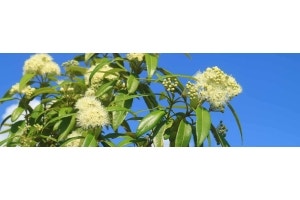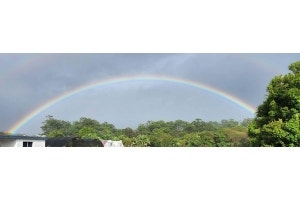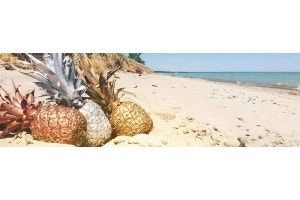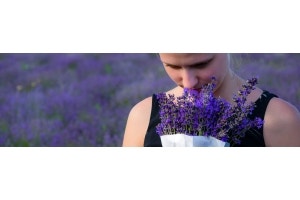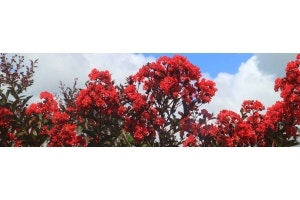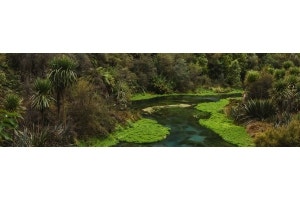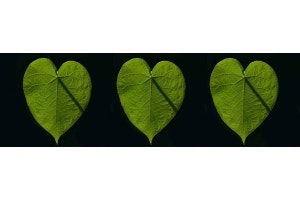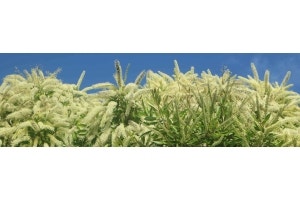
Kia ora! Did you know? Many of our beloved Aussie garden plants have close relatives and cousins across the ditch, in the land of the long white cloud. The similarity of climates means many New Zealand natives have made their home here. Most native New Zealand plants are evergreen, and appreciate a frost-free or mild climate - which makes them ideal for growing in a lot of Australian climates.
Let's meet some of the Kiwis you could encounter in your neighbourhood!

 The showy Leptospermum scoparium is also a great parent plant for many new garden varieties of tea tree, especially when hybridised with the more resilient Australian Leptospermums. These hybrids include hot pink-flowered Seclusion and Lipstick, and the aptly named dark-leaved Kiwi, which has a coveted Royal Horticultural Society Award of Garden Merit.
The showy Leptospermum scoparium is also a great parent plant for many new garden varieties of tea tree, especially when hybridised with the more resilient Australian Leptospermums. These hybrids include hot pink-flowered Seclusion and Lipstick, and the aptly named dark-leaved Kiwi, which has a coveted Royal Horticultural Society Award of Garden Merit.











Tea Tree
Yes, our favourite native Aussie tea tree is a Kiwi! Leptospermum is the botanic name for tea trees, and Leptospermum scoparium is the botanic species known as manuka - yes, that manuka, that provides the pollen that makes the honey that costs more than a smashed avo on toast in a Toorak cafe. The showy Leptospermum scoparium is also a great parent plant for many new garden varieties of tea tree, especially when hybridised with the more resilient Australian Leptospermums. These hybrids include hot pink-flowered Seclusion and Lipstick, and the aptly named dark-leaved Kiwi, which has a coveted Royal Horticultural Society Award of Garden Merit.
The showy Leptospermum scoparium is also a great parent plant for many new garden varieties of tea tree, especially when hybridised with the more resilient Australian Leptospermums. These hybrids include hot pink-flowered Seclusion and Lipstick, and the aptly named dark-leaved Kiwi, which has a coveted Royal Horticultural Society Award of Garden Merit.
Also known as tea tree, and as kanuka, is Kunzea ericoides. The two sound very similar, and look a little similar, too. Kiwi Kunzea has rounded tea tree flowers, with extra subtle flourishes of 'eyelashes' around the centre. Aussie Kunzeas go full Priscilla with huge long 'eyelashes' that completely dominate the individual flowers, creating a feathery pompom effect.Kiwi kunzeas have astonishingly been recorded growing around geothermal pools and volcanic craters; Aussie kunzeas prefer the comparatively cruisy dry climate of gardens and bushland.

Kohuhu & Tawhiwhi
Pittosporum - pittos - are ripper plants for hedging, topiary, privacy screens. They're nicely open and airy, and the little leaves are glossy and pale in colour, reflecting a lot of light. Which means that pitto hedges don't oppress, visually - they add lightness and openness to a garden, while still giving you a dense definite boundary.Contrasting with their super-shiny leaves are the chocolate-black stems, very attractive. No wonder they are grown for florist foliage as well as for garden shrubs.Choose Silver Sheen Dreamfor bright foliage, Hole in One for compact no-prune bushes, and brightly variegated lemonwood for tall trees that can clip to privacy hedges.

Hebe
These lovely evergreen shrubs deserve a fair go in your garden if you have the climate. Hebes (pronounced hee-bee) like it mild - not too cold in the winter, and not too hot and dry in the summer. Water, shelter, and bright light. Don't get the idea they're delicate and tender though - hebes grow along the coasts in salt spray and sea breezes, and make great windbreak hedges and wildlife shelters. They flower eagerly from tubestock size, in pinks, purples, and white - and the bees and pollinators go crazy for the nectar. Many varieties have colourful leaves too for all year round interest - Annie's Winter Wonder has cream variegation, Marie Antoinette plum purple foliage, and new Black Satin deep purple leaves in season.

Pohutukawa & Rata
If you're new to gardening or unfamiliar with Aussie native plants you'd be forgiven for thinking this is a giant native bottlebrush. The fluffy red flowers are so similar it's an easy mistake to make! And in fact, pohutukawa (Metrosideros) and bottlebrush (Callistemon) are both members of the huge Myrtaceae family, so they share genetic roots and similarities.There's many species of Metrosideros. In Australia, we commonly grow varieties of M. collina, a Pacific islands species, as they suit the warmer climate (and grow to a more garden-friendly smaller size). We call these scarlet-blossomed shrubs New Zealand Christmas bush, as many varieties flower in midsummer - though in a mild climate some can bloom off and on almost all year round.

Harakeke - NZ Flax
European flax, (Linum usitatissimum), the plant whose fibres makes linen cloth, is a soft, slender plant of cornfields and meadows, with small pale blue flowers. New Zealand flax (Phormium tenax) is a firm, broad, tall, resilient plant of rugged clifftops, which blooms in tall sturdy spikes of red and orange. A very different beast! Phormium fibres can be used to make cloth too though - especially for traditional Maori clothing.The NZ flax varieties in our range are smaller and more slender in size, compact and suited to backyard gardening rather than open clifftops. They also have beautifully coloured leaves, in bright copper, darkest bronze, and dark plum shades.

Rock Lily
Growing fast, flowering in shade, with pretty white flowers and blue-green leaves, the NZ rock lily (Arthropodium) is a lovely plant for Australian gardens. Elegant and dainty-looking, it it's resiliently hardy and ideal for planting in the dry shade under trees. It's been in our range for a decade, and we have plants of the variety 'Matapouri Bay' growing right by the entrance to our nursery, to welcome visitors.

Pohuehue
Perhaps the strangest of Kiwi natives to find its way into our gardens is the pohuehue or maidenhair vine bush, Muehlenbeckia, a wiry tangle of stiff dark stems and tiny shiny bronze-green leaves. If your eyesight is keen you'll also spot occasional translucent white flowers amongst the leaves. It's often grown as a trailing plant indoors, but grow it in the garden and it can be clipped and encouraged into a firm dense hedge that might reach 2m in a couple of years!

Mirror Bush
It's easy to see how the mirror bush got its common name - every leaf is super-shiny, looking almost varnished, reflecting the sunlight and glistening in the garden. Coprosmas are ideal for adding pops of colour as the cultivated varieties in our range have vibrant leaf tones - gold, orange, chocolate brown, lime green - and they change subtly with the seasons. Karo Red is the darkest, in russet-chocolate shades; Green & Gold is suitably patriotic for even a true blue Aussie; Evening Glow shines like a sunset of emerald and orange; Rainbow Surprise sports cream pink, peach shades through every plant.

Tree Fern
The most New Zealand-y plant has to be the fern - it's the national symbol, on sports shirts and tourist tees. And the tree fern, with its parasol of long fronds, has to be the most ferny-est fern of all ferns. Don't tell the Kiwis, but Cyathea, the NZ tree fern, has close relatives over the ditch in VIC, QLD, and TAS. Tree ferns thrive in sheltered spots, nutritious soils, moist climates with regular rainfall - like east coast and southern Australia.

Cabbage palm
The slender-leaved upright Cordyline australis - the southern cordyline - is such a resilient adaptable garden plant that it's seen around the world from Canada to California to Cornwall and Devon, where it's known as the Torquay palm. It stands up to hot sun, strong winds, salt spray, winter cold. It grows in a wide range of locations, soils, and climates; which has created a wide range of natural variation. This makes cordylines great candidates for breeders to work on, creating new colourways for us to enjoy. From purple -black Atropurpurea and rust brown Red Star to pink stemmed Peko, there's a lot of colourful choice! We're familiar in our gardens with the tuft of sword-shaped leaves, that sometimes grows into a short trunk or two. In the wild those trunks can reach 20 metres or more, and grow for several hundred years. Resilient indeed.
























